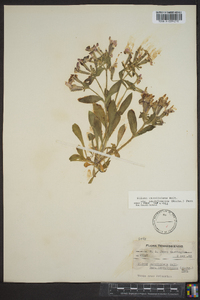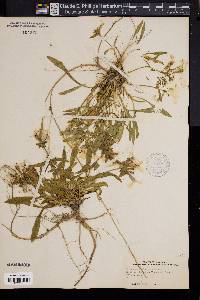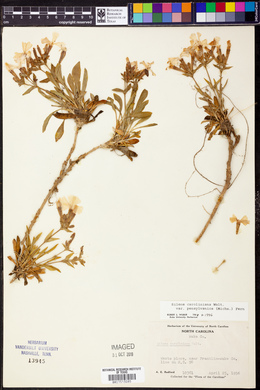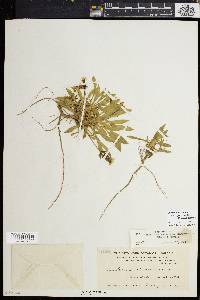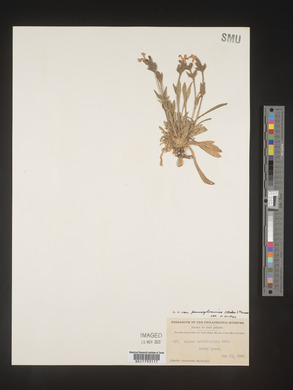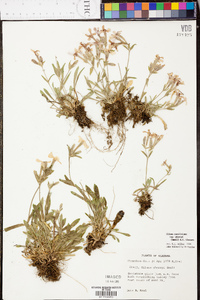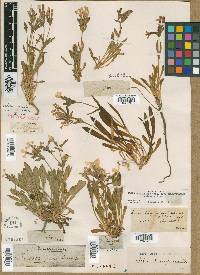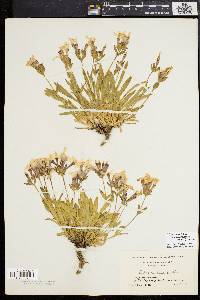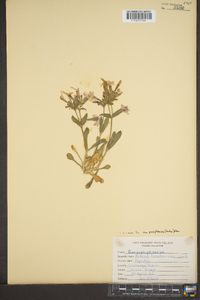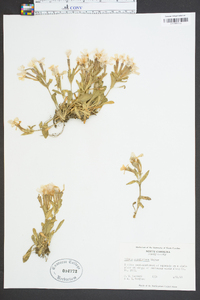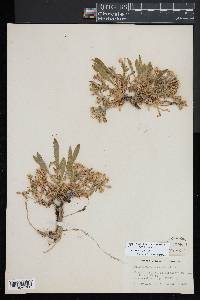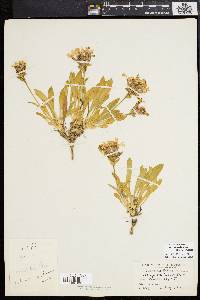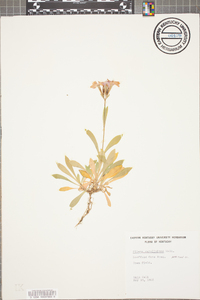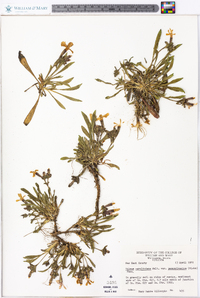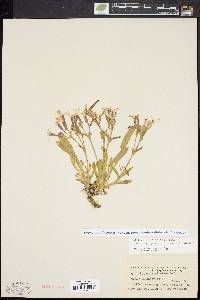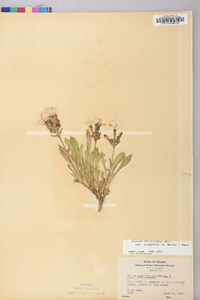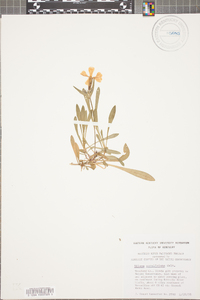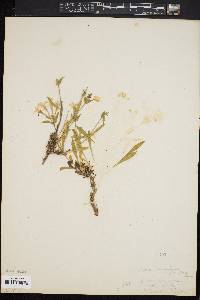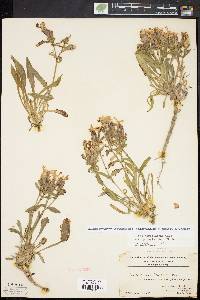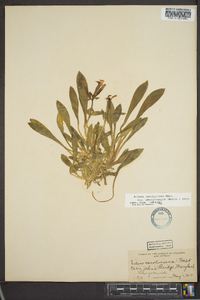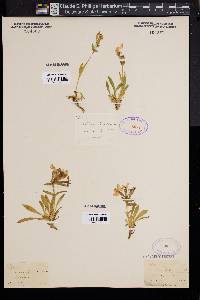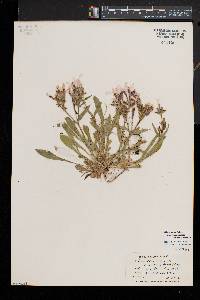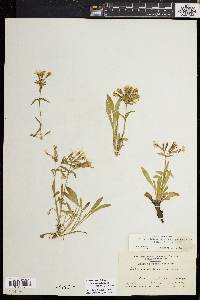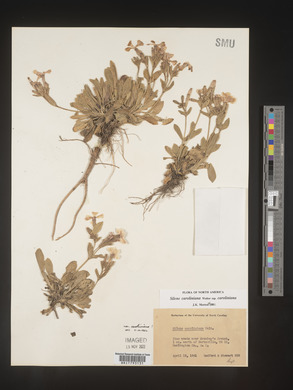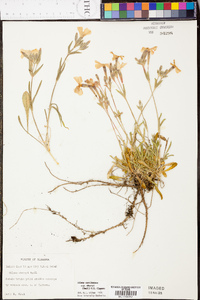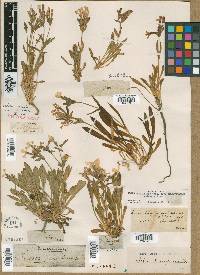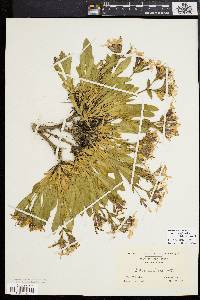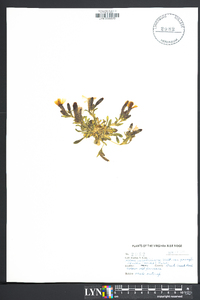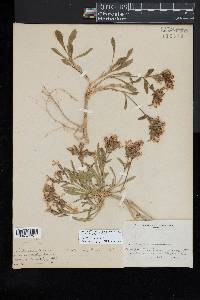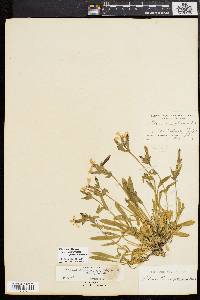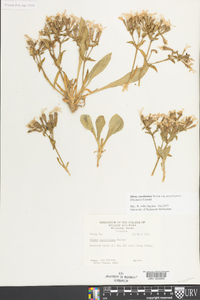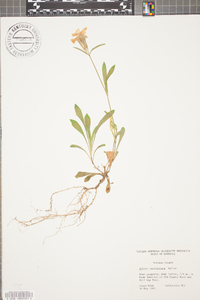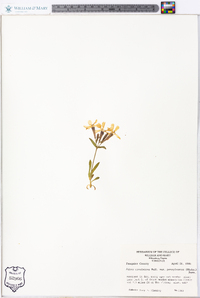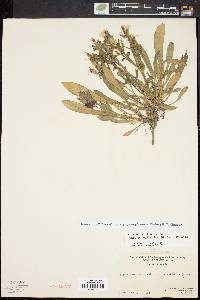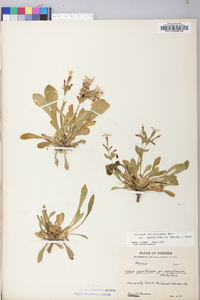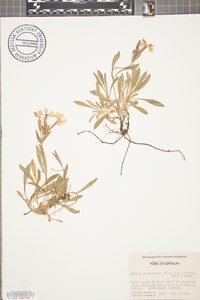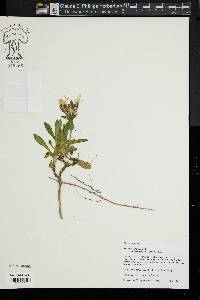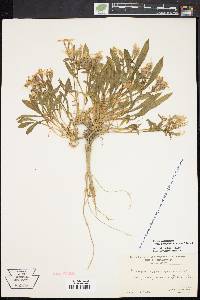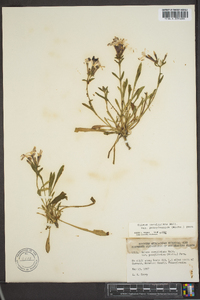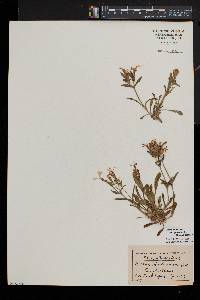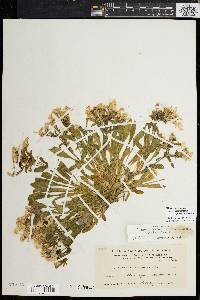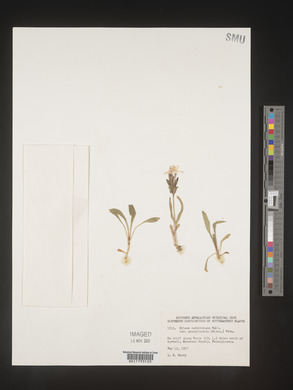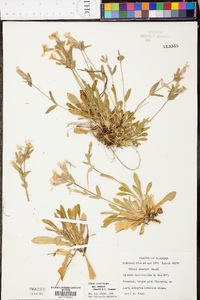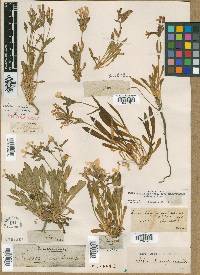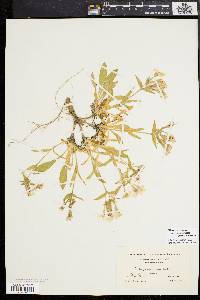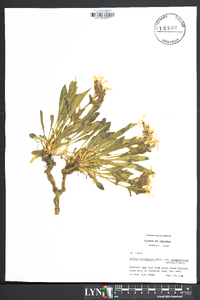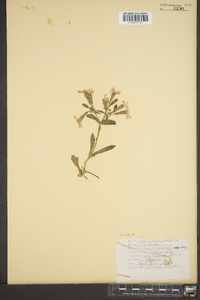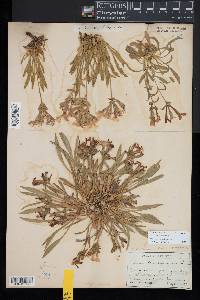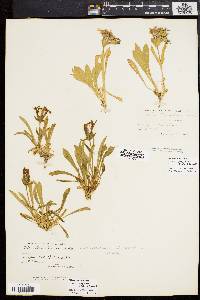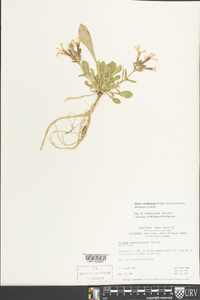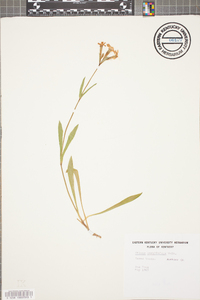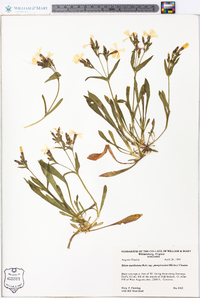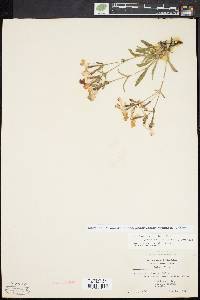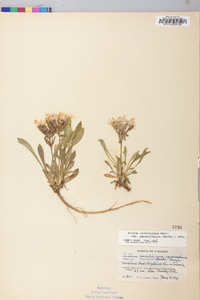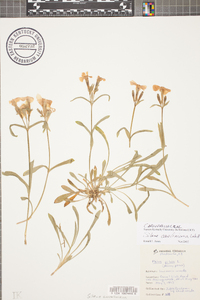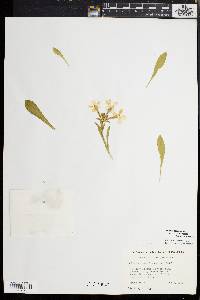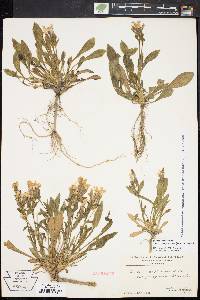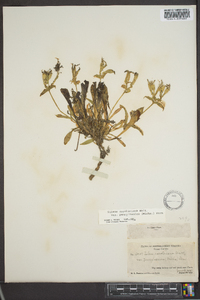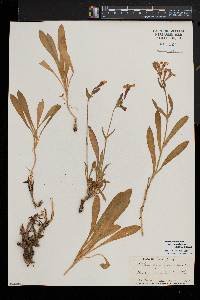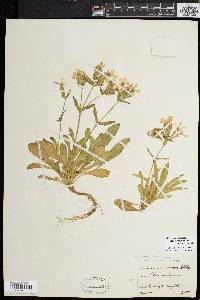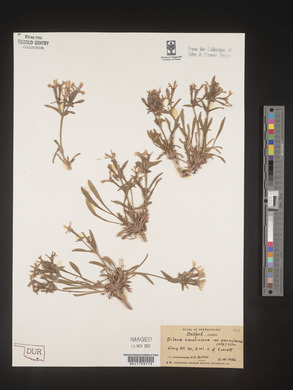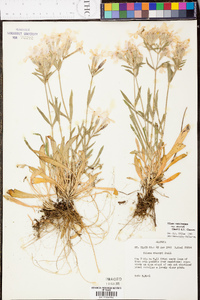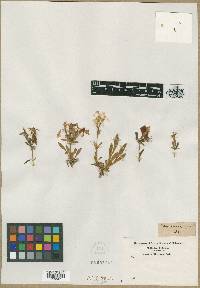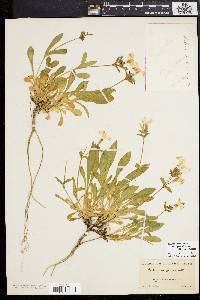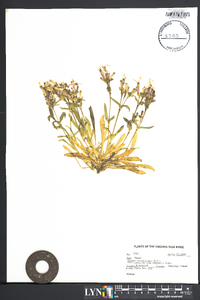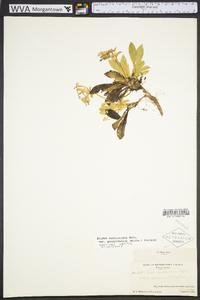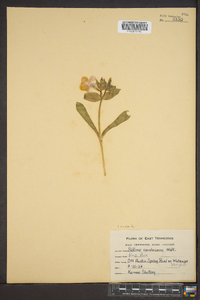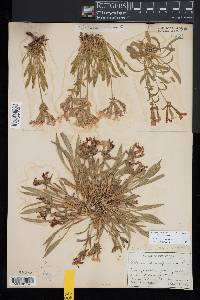Silene caroliniana
|
|
|
|
Family: Caryophyllaceae
Sticky Catchfly
|
Plants perennial, cespitose; tap-root stout; caudex much-branch-ed, woody. Stems ascending, scarcely branched, 8-20(-30) cm, softly pubescent, stipitate-gland-ular or eglandular, rarely glabrate. Leaves mostly basal, petiolate, 3-12 cm (including petiole); cauline leaves in 2-4 pairs, those of mid and distal stem sessile, shorter and narrower; blade narrowly to broadly oblanceolate, base spatulate into winged petiole, apex acute to obtuse, glabrous, puberulent or pilose on both surfaces and frequently stipitate-glandular, at least petioles usually ciliate. Inflorescences (1-)3-15-flowered, open, bracteate; bracts foliaceous. Pedicels ascending or erect, 0.2-0.8(-1.5) cm, densely pubescent and frequently stipitate-glandular. Flowers: calyx usually green, prominently 8-10-veined, in flower narrowly tubular, lobed, narrowed proximally around carpophore, 15-22 × to 5 mm, becoming broader and clavate in fruit, pilose or stipitate-glandular, veins parallel, with pale commissures, lobes round, 1-3 mm, margins usually purple tinged, broad, membranous; petals spreading, usually bright pink, rarely white, broadly to narrowly obovate, 2 times longer than calyx, base tapered into ciliate claw equaling or slightly longer than calyx, margins entire or shallowly lobed and crenulate, auricles absent, appendages oblong, unlobed, 1.5-2 mm; stamens equaling claw; filaments glabrous; styles 3(-4), ultimately slightly exceeding claw. Capsules ellipsoid to obovoid, 8-10 mm, equaling calyx, opening by 6 (or 8) recurved teeth; carpophore 5-8 mm. Seeds dark brown, reniform-rotund, 1.3-1.5 mm, coarsely and evenly papillate. Although the three subspecies of Silene caroliniana have overlapping ranges of distribution, subsp. caroliniana occurs predominently in the southeastern United States, subsp. pensylvanica in the northeast, and subsp. wherryi on the western side of the Appalachians. Intermediate plants are occasionally encountered. A hybrid between subsp. wherryi and S. virginica was reported by J. A. Steyermark (1963), and a hybrid swarm between subsp. pensylvanica and S. virginica by R. S. Mitchell and L. J. Uttal (1969).
Taprooted perennial with slender simple stems 8-20 cm, usually glandular-hairy; lvs oblanceolate 5-12 cm נ12-30 mm, the basal petiolate, the cauline 2-3 pairs, often sessile; infl short, dense, with usually 5-13 fls; cal tubular, 15-22 mm; pet white or dark pink, without auricles, the appendages oblong, entire, 1.5-2 mm long, the blade cuneate-obovate, 8-15 mm, entire or retuse, usually irregularly crenate; seeds 1.3-1.5 mm, prominently inflated, tuberculate; 2n=48. Var. pensylvanica (Michx.) Fernald, with broadly tubular, thinly to densely pubescent but eglandular cal, and with the claws usually about equaling the cal, occurs in rocky, usually calcareous woods from s. O. and Ky. to Mo. and n. Ala.; Apr, May. Var. caroliniana is more southern. Gleason, Henry A. & Cronquist, Arthur J. 1991. Manual of vascular plants of northeastern United States and adjacent Canada. lxxv + 910 pp. ©The New York Botanical Garden. All rights reserved. Used by permission. |


